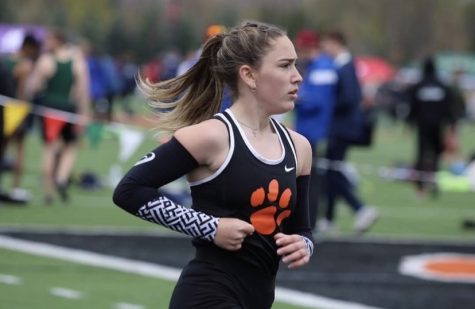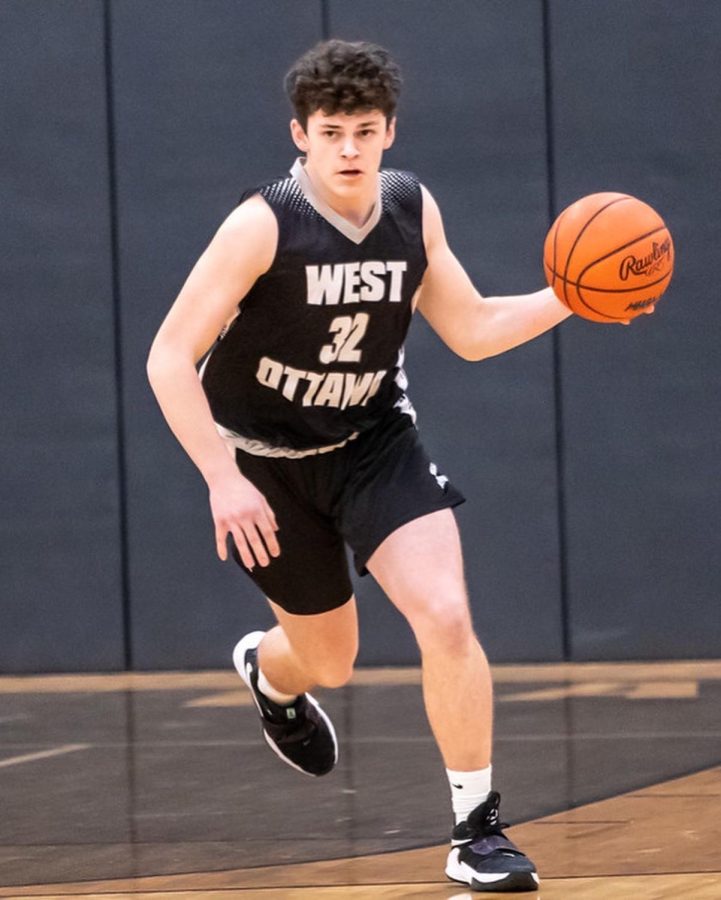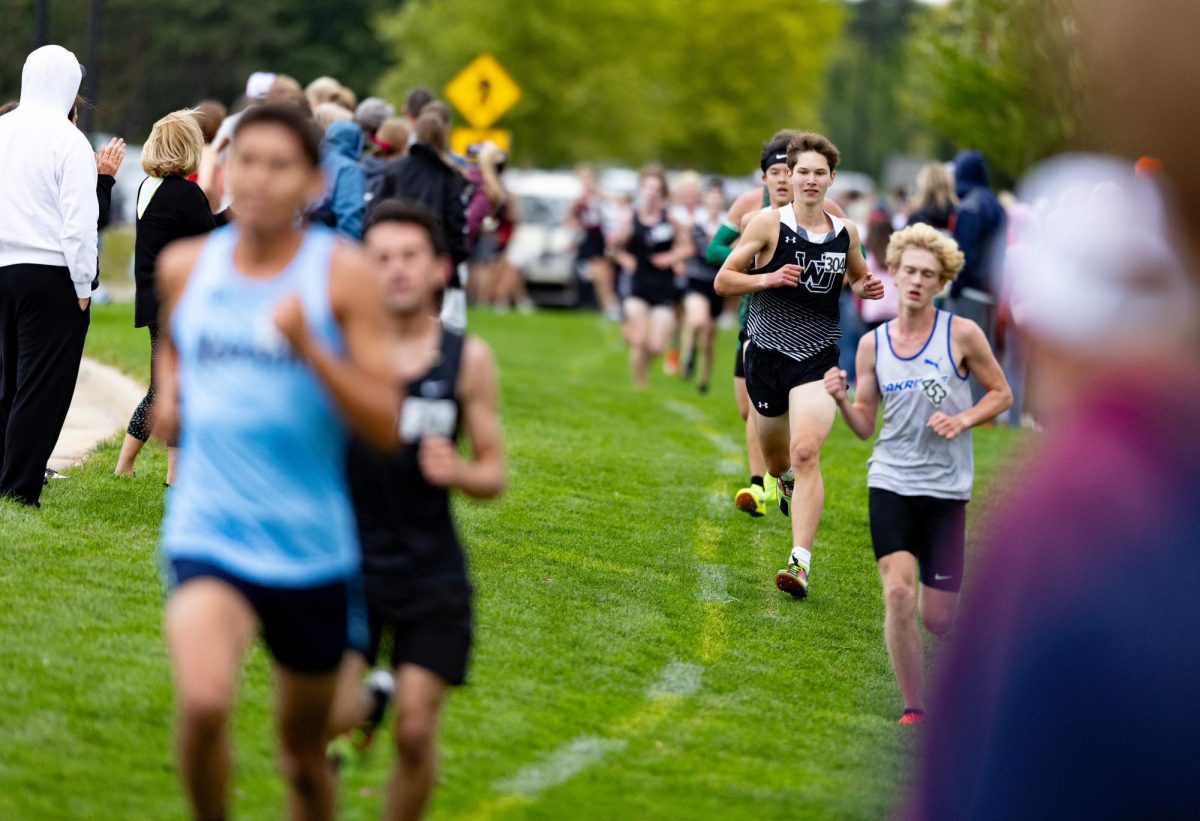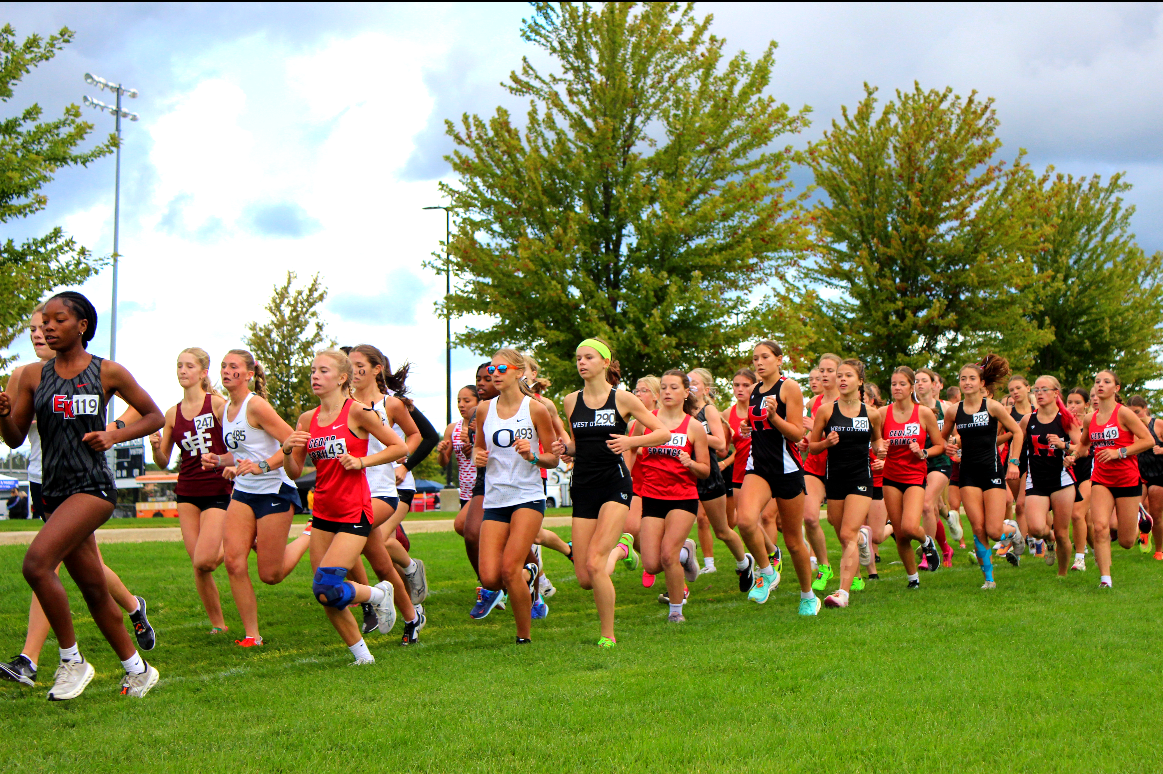Rehab or quit
Mark Cosgrove dribbling down the court before a horrible ACL tear
November 16, 2022
“The intense pain and throbbing of my knee made it incredibly difficult to fall asleep. I was able to sleep for a few hours but then suddenly my eyes shot open, I felt a blast of pain shoot through every crack and crevice in my body all while every muscle in my body clenched at the same time. This was the worst pain that I have ever experienced. Thoughts rushed through my head as I lay in bed awake and in pain.”
Jr. Mark Cosgrove tore his ACL and lateral meniscus, and like many other athletes had so many questions on what was going to happen next.
“What was happening?”
“Why is this happening to me?”
“Will I ever play again?”
“How long will I feel like this?”
“Tearing my ACL and the lateral meniscus is the worst thing that’s ever happened to me. But I’ll do whatever it takes, I’ll work harder than I’ve ever worked before. I will play again.”
Soon Cosgrove will need to decide to call it quits or put in the work to continue with his sport. Cosgrove is willing to go through all that agony of physical therapy and surgery to return to the court playing basketball. Sr. Elaina Dishinger will also be returning to her sport after a long fight with her injury.
“It was sophomore year, near the end of my soccer season I noticed some pain in my hip. I just brushed it off thinking it was nothing. But it kept getting worse and no one could figure out what was wrong.”
Before she knew it junior year and diving and club soccer started up once again. By then she had started physical therapy.
“The pain had become unbearable. I dreaded going to practice just because I knew I would be in pain the whole time. I was hopeless.”
“Physical therapy isn’t helping. I wasn’t allowed to play to my full extent, and the pain was getting worse. After seeing an orthopedic surgeon, it was decided that I needed surgery because I had torn the labrum in my hip. This was my breaking point.”
“I had struggled through the pain and worked hard at PT to try and help it, and now I was going to need surgery, which had a six-month recovery. This meant that I would not be able to play soccer in the spring, this was heartbreaking.”
“The negative thoughts overflowed my brain…”
“I am going to be so behind all the other girls.”
“What if the pain doesn’t go away.”
“I was ready to give up soccer. I was scared of the hard recovery I was going to face. Thankfully my very supportive family, friends, and coaches pushed me to work hard and made me fall in love with the sport again.”
In some cases, athletes choose to not play because of re-injury or surgery. For Dishinger, this was not the case. She worked hard while she was in recovery and still showed up to every high school practice and game to support her team. Other athletes can no longer play their sport because of the constant re-injury of a muscle or a bone. For a junior athlete at Hope College, Rachel Fusik, this was the case.
Fusik’s running journey started in fourth grade. “When I first started running, it was completely socially motivated and low-pressure. I enjoyed running so much that I decided to primarily focus on that as my main extracurricular in high school.”
Initially, she didn’t face many substantial injuries but health issues began to arise during her junior year when she
would lose consciousness during or after races.
“I had some tests done and basically was told that the passing out was most likely due to a combination of anxiety, anemia (extremely low iron levels), and under eating.”
“The summer before my freshman year in college, I was in fantastic shape and hitting every workout that my coach sent to me. However, I started to feel a nagging pain in my left foot and foolishly kept running through it.”
Athletes know when they get hurt they have to turn off that emotion of pain and try to just play it because they do not want to risk putting a hold on playing the sport they love.
“When I finally got on campus in the fall of 2020, I could barely even walk and was put in a boot for posterior tibial tendinitis and a stress reaction. I ended up being out for the entire season that fall.”
When winter hit, Fusik was finally able to run again. When she started back up she was way too impatient and ran too far and too fast. “I was once again put in a boot after being diagnosed with another stress reaction, a bone bruise, and extreme posterior tibial tendinitis.”
“I was in that boot for three months but was in therapy and had custom orthotics made to help my foot. I finally was back to running on the ground in the summer of 2021 but I still felt like there was something wrong with my foot. My training that season consisted mostly of bike and swim workouts and extremely low mileage.”

“At my first appointment, I was expecting the doctor just to tell me that I was dehydrated or anemic, but he voiced his nervousness that I may have a heart disease known as hypertrophic cardiomyopathy.”
“Haven’t I faced enough setbacks already?
“Why me?”
She was terrified, she didn’t know what this could mean for her. Once again another break from running was needed.
“Unfortunately again, trainers, my friends, and I all believed that it was just a result of anxiety as my symptoms tended to be uncontrollable shaking and a loss of vision. Finally though, during my training the past summer (2022), I decided to go to the doctor because I would feel extremely lightheaded during and after each run. I had no idea what I had done to deserve all of the trials and tribulations I had faced, but I still trusted and had the patience for God’s timing and planning.”
Fusik’s summer was spent with countless trips to the hospital, different cardiologists and tests, and a lack of answers. “After I had a stress echo (which is essentially an x-ray of your heart before, during and after vigorous exercise), they were able to conclude that I did not have that type of heart disease, but my heart rate drops abnormally quickly.”
“This fall, I’ve still been taking trips to the hospital as I do not have a definitive answer to my condition. I recently received a long-term heart monitor and am considering surgery to have a monitor implanted for the next few years. I am an extremely optimistic person and am hopeful that I will be able to compete in this upcoming track season, but if I’m being completely honest with myself for myself, I’m afraid that this may be the end for me.”
Not only did the health setbacks affect Fusik’s body but it affected her mind. It’s not easy to live a life like a normal college student when there is a nagging thought in the back of her mind that she could have a terminal disease that neither herself or the doctors could figure out.
“I love running and I love the person I am because of it. I want to run until I can’t anymore but unfortunately, that time might have already come.”
Sports take a toll on an athlete’s body, sometimes causing injury. Deciding on the path to take after the injury is even more stressful. Some decide it’s better to concentrate in school, others want to take on rehab. Either way it’s a tough road.




